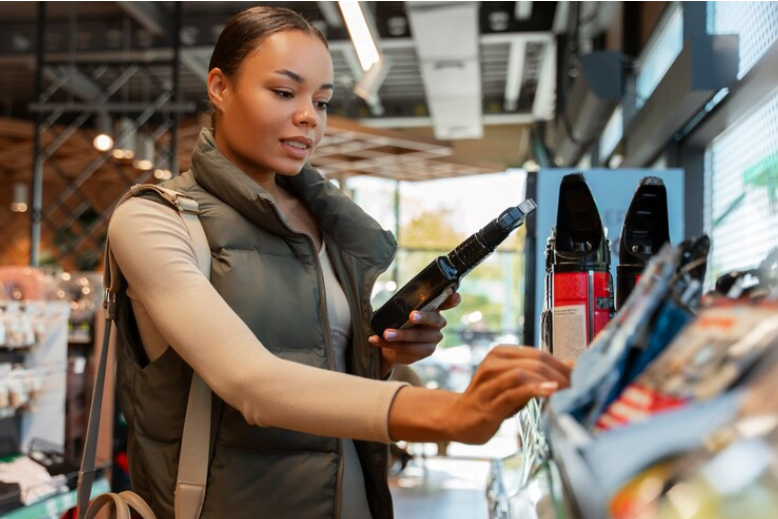Implementing self-ordering kiosks in your convenience store can seem like a big task, but with the right steps, it’s easier than you might think. With companies like MPOS offering self-ordering kiosks specifically designed for the convenience store industry, now is the perfect time to consider making the switch.
Let’s walk through the process and explore how self-ordering kiosks can enhance the shopping experience, boost efficiency, and ultimately increase your sales. Below are comprehensive steps to guide you through the successful implementation of self-ordering kiosks in your convenience store. Plus, we’ll throw in some practical examples along the way!
1. Analyze Your Business Needs
Before investing in self-ordering kiosks, conduct a thorough analysis of your store’s unique needs. Determine the specific areas where kiosks can provide the most value. For example, you might want to streamline checkout, reduce labor costs, or provide a faster and more efficient shopping experience.
Ask yourself these critical questions:
- Are long checkout lines a problem in your store?
- Could your employees spend more time on other important tasks, like stocking shelves or helping customers, if you automate the checkout process?
- Do you serve customers who prefer a quicker, self-service option?
By answering these questions, you’ll gain clarity on how self-ordering kiosks can address pain points in your business.
2. Choose the Right Kiosk Hardware and Software
Choosing the right kiosk hardware and software is crucial to ensure smooth operation. MPOS’s self-ordering kiosks are designed to meet the unique demands of convenience stores, offering flexibility and robust functionality. You’ll want to select hardware that can withstand daily use and is intuitive for your customers.
Consider these factors when choosing kiosk hardware:
- Durability: Kiosks need to endure constant use. Look for hardware that’s built for heavy traffic environments, with durable touch screens that respond well to customer inputs.
- Integration: The kiosk should seamlessly integrate with your existing point-of-sale (POS) system and other technologies like payment processing systems, loyalty programs, or inventory management tools.
- Design: Ensure the hardware matches your store’s layout and aesthetic. Kiosks that blend well with your store’s ambiance will enhance customer experience.
Tip: Consider touchless options, especially in a post-pandemic world where customers might prefer minimizing physical contact. Also, check if the kiosk can offer multiple languages, especially if your store serves a diverse customer base. Moreover, on the software side, you’ll need to make sure that it supports all the functions you require. MPOS’s kiosks come with software that can handle multiple payment methods, offer product recommendations, and allow customers to quickly scan, pay, and go.

3. Set Up and Configure Your Kiosks
Once you’ve chosen your hardware and software, it’s time to set up your self-ordering kiosks. During the installation phase, ensure that your kiosks are placed in high-traffic areas for maximum usage. Here’s what you need to do:
- Network Setup: Connect your kiosks to your store’s network to enable real-time data syncing. This allows for immediate inventory updates and ensures that customers always receive accurate pricing and availability information.
- Set Up Your Payment Options: Your kiosk should seamlessly integrate various payment methods. Most modern customers expect the option to pay with credit cards, mobile wallets (like Apple Pay or Google Pay), or even loyalty points.
- Imagine this: A customer grabs a few items, quickly places an order for a fresh sandwich at the kiosk, and uses their smartphone to pay—all without needing to interact with a cashier. Convenient, right? This smooth payment process ensures they can grab their food and go, saving them precious time.
- User Interface (UI) Design: The UI should be intuitive and easy to navigate. Customers should be able to complete their transactions quickly and effortlessly. Configure the menus, images, and buttons in a way that minimizes confusion and enhances the shopping experience.
A simple menu with product categories like “Snacks,” “Beverages,” and “Ready-to-Eat” makes it easy for customers to find what they need. Additionally, visuals like product images or simple icons can guide users through the process smoothly.
- Testing: Run a series of tests to ensure the kiosks are working properly. Test different scenarios, such as multiple payment types, scanning products, and printing receipts. This will help you identify any issues before going live.
During testing, you might find that customers take longer than expected to navigate a particular section of the menu. By tweaking the design or layout, you can streamline the process and improve user experience before your grand launch.

4. Train Your Staff
Even though kiosks reduce the need for human cashiers, your staff still plays a crucial role. Train them on how the kiosks work, so they can assist customers if needed. They should also know how to troubleshoot common issues, like a frozen screen or a payment error.
For instance, if an older customer is struggling to complete an order, a staff member can offer assistance. Or, if a kiosk malfunctions during a busy period, trained employees can quickly resolve the issue, ensuring your operations keep flowing smoothly.
5. Promote Your Kiosks to Customers
The next critical step is promoting the kiosks to ensure customers know about the new service and its benefits. Effective promotion can drive adoption and encourage frequent use. Here’s how to make customers aware of your new kiosks:
- In-Store Signage: Place signs around your store that highlight the convenience and time-saving benefits of using the kiosks. For instance, messages like “Skip the Line, Use Our Self-Order Kiosks!” can grab attention.
- Incentives: Offer promotions like discounts or loyalty points for customers who use the kiosk. This not only incentivizes customers to try it but also builds loyalty.

6. Monitor and Optimize Performance
After the kiosks are operational, continue to monitor their performance to ensure they’re functioning optimally. You’ll want to keep an eye on the following:
- Hardware Maintenance: Ensure your kiosks are well-maintained. Regularly check touchscreens, receipt printers, and payment systems to avoid technical issues. With MPOS’s kiosks, you can rely on high-quality hardware designed to last, but routine checks are still essential.
- Customer Feedback: Listen to your customers’ feedback on their kiosk experience. Are they finding it easy to use? Are there any recurring issues? Adjust the system’s interface and features based on this valuable input.
- Content Updates: Keep the kiosk’s product listings, prices, and promotions up-to-date. Outdated information can frustrate customers and diminish trust.
- Regular performance reviews will help you optimize the system, ensuring it continues to meet your store’s needs and improve your overall operations.
6. Post-Installation Support: Ensuring Smooth Operations
Once your self-ordering kiosks are fully operational, the work doesn’t stop there. It’s important to ensure ongoing support and maintenance for long-term success. A reliable support system is essential to avoid disruptions, address any technical issues, and keep your kiosks running at their best.
Here are some key benefits of post-installation support:
- 24/7 Service Availability: This is especially crucial for convenience stores that cater to customers at all hours.
- Proactive Maintenance: Regular checks and updates ensure that your kiosks continue to run efficiently.
- Seamless Software Updates: As new technologies and customer preferences emerge, your kiosks may require software updates to stay current
With MPOS’s 24/7 UK-based support, convenience store owners can enjoy peace of mind knowing that help is always available. This level of service is particularly valuable for stores that operate beyond regular business hours, ensuring your kiosks are functional around the clock.
Similarly, MPOS’s proactive approach to maintenance helps identify potential problems before they impact your store’s operations, keeping downtime to a minimum. Moreover, MPOS offers regular updates to ensure your kiosks stay equipped with the latest features, ensuring smooth transactions and security.
By having a solid post-installation support system in place, you can focus on delivering a seamless shopping experience while knowing that your self-ordering kiosks are backed by reliable, round-the-clock assistance. This helps ensure that both your business operations and customer satisfaction remain optimal long after installation.
Self-Ordering Kiosks Are a Game-Changer for Convenience Stores
Implementing self-ordering kiosks in your convenience store can be a game-changer. From reducing checkout times to freeing up your employees for more valuable tasks, these kiosks can significantly enhance the efficiency and profitability of your business. MPOS’s tailored kiosks for convenience stores are the perfect solution for retailers looking to adopt this technology.
By following these steps—analyzing your needs, choosing the right hardware and software, setting up and configuring your kiosks, promoting their use, and continuously monitoring performance—you can successfully integrate self-ordering kiosks and provide an improved shopping experience for your customers.



